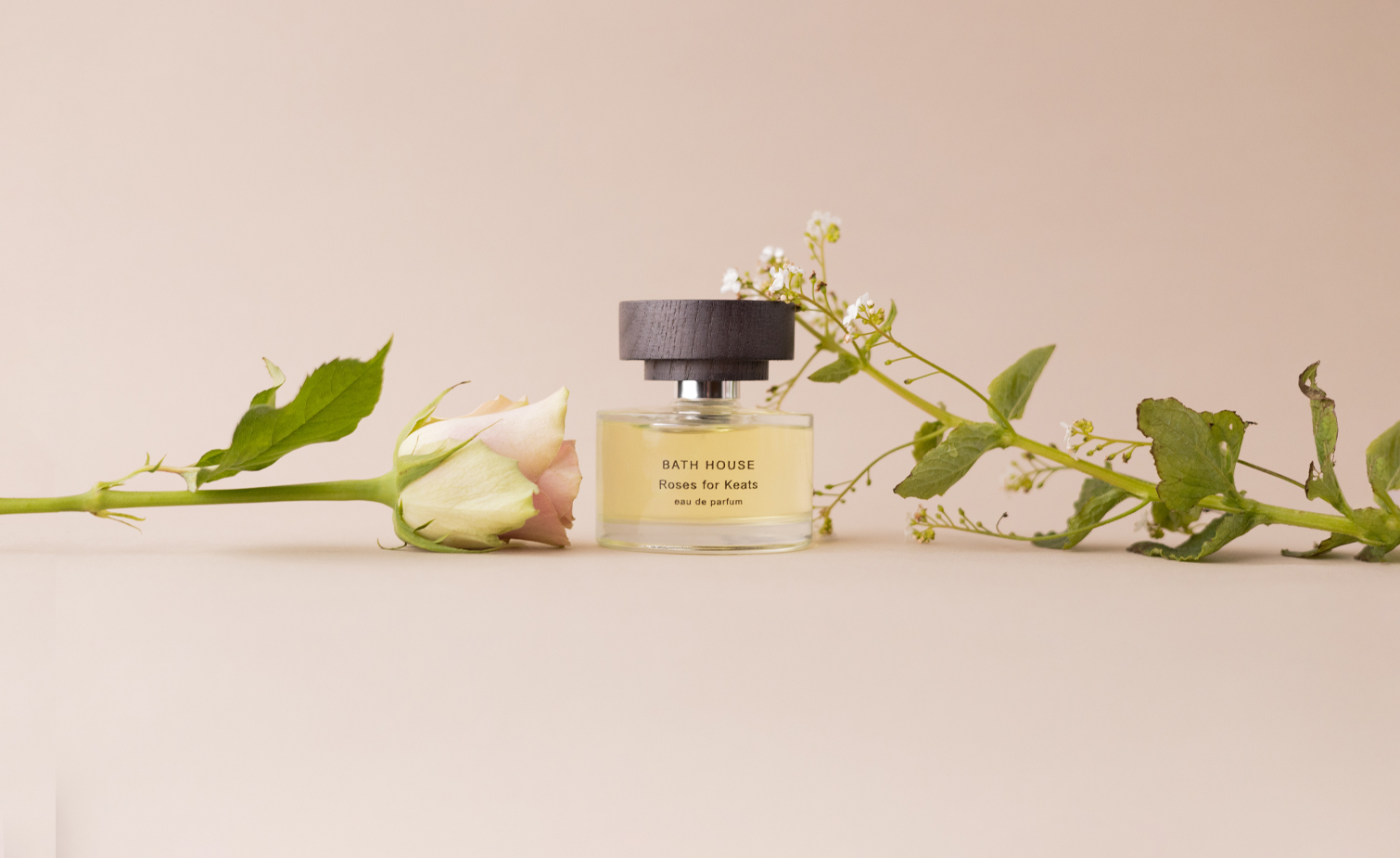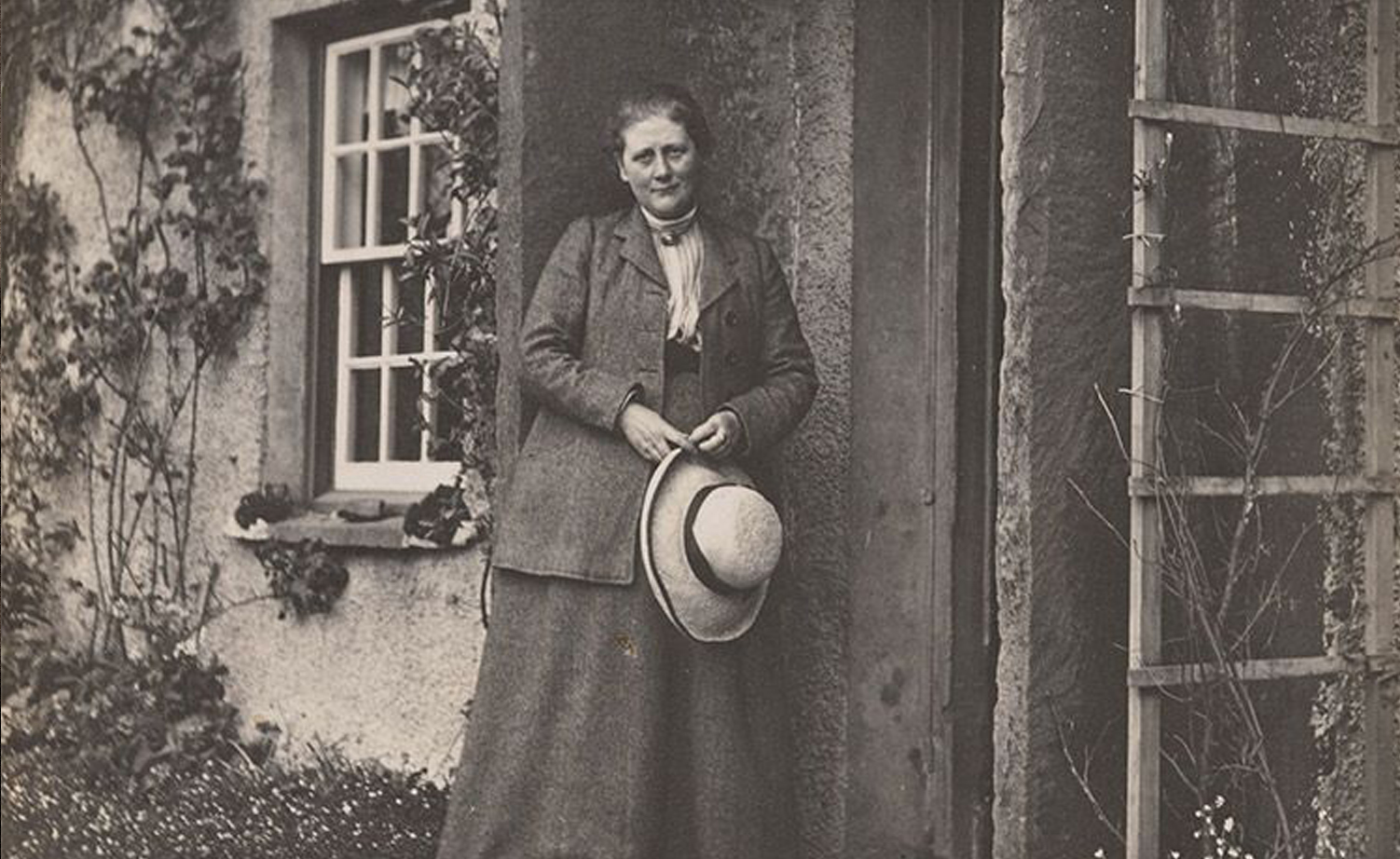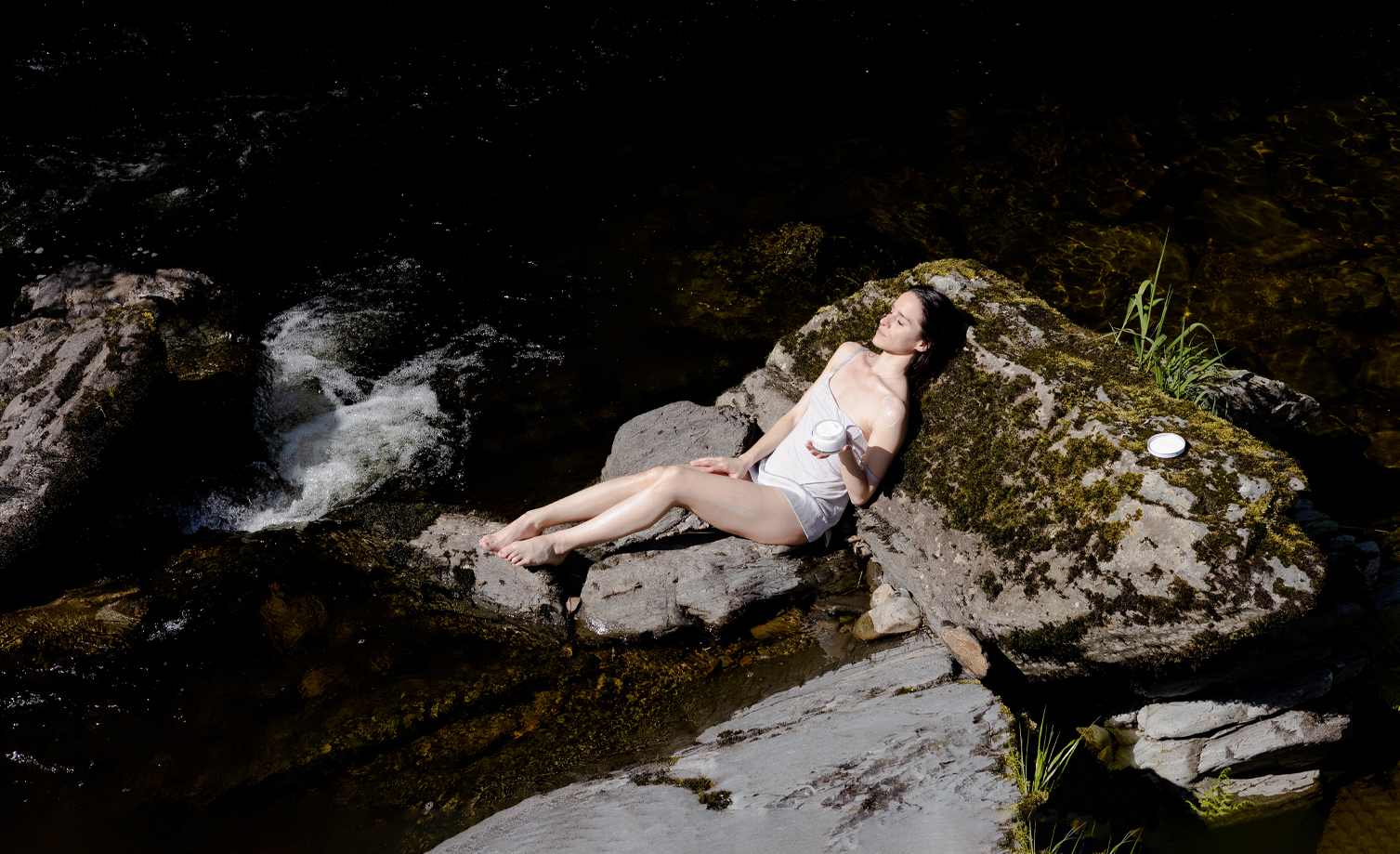Hannah Garside of Aelisabeth Flowers describes the thoughts and processes behind creating our new floral displays for Spring.
What inspired the idea for the Bath House installation?
The brief required a floral display for Mother’s Day which would last all the way through till Easter. I was thinking about the drying sunlit aspect of the windows and decided on a combination of fresh flowers, which naturally fade and the use of dried, creating an attractive mix that would be perfect. All my creative ideas start with selecting what I call the ingredients ( the flowers grasses and stems) which in this case included amaranthus, eryngium, limonium, miscanthus, panicum fountain, scabious, dried barley, oats, wheat and moss. I previously made hanging installations for the Bath House store windows and so thought it would be a lovely idea for the structure, to design as meadows this time around. They would also work really well for the windows, incorporating Bath House products within the design, placing them in between and on top of the moss. They allow customers to see through them and over the top of them, so it is still possible to look through the windows and see inside the stores.
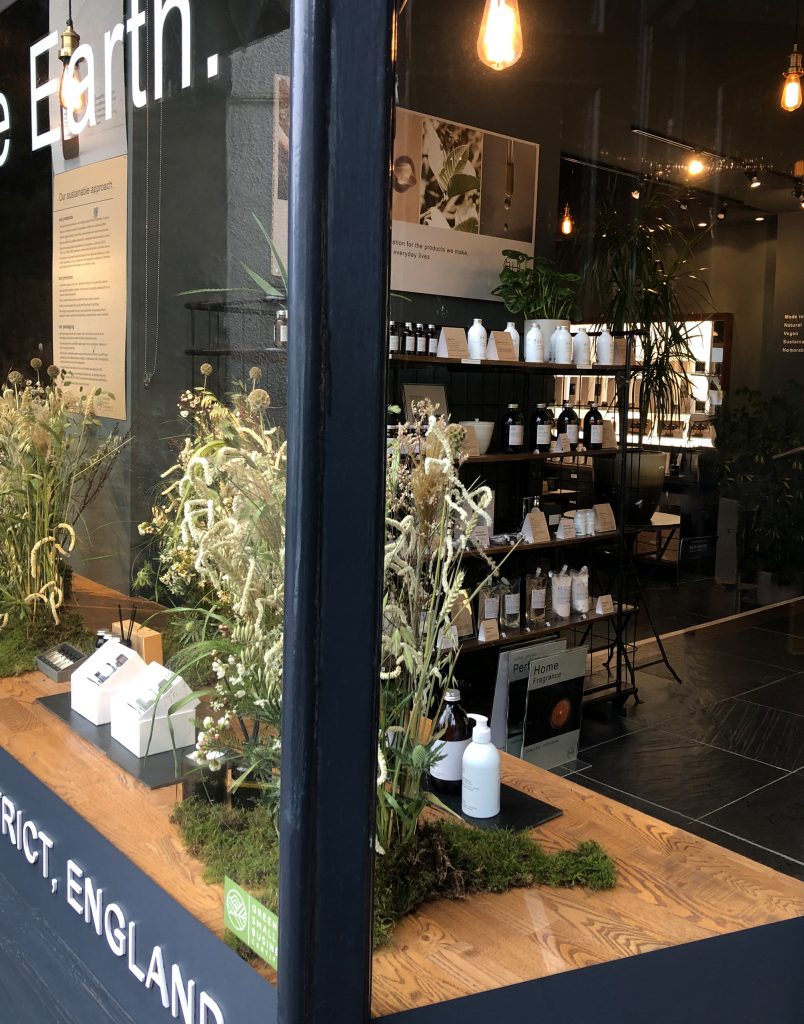
What else did you consider when creating these arrangements?
I like working with Bath House because like me, they are a business very keen on sustainability. I used Agra-Wool to make all the bases for meadows rather than the traditional floral foam blocks which are oil-based (petrochemical) and therefore not fully degradable. Agra-Wool is an all-natural substance and is completely biodegradable. I have used plastic trays underneath these Agra-Wool blocks to keep them secure, however all of these trays are a long-term investment, which I will save and can be reused for other floral projects once the meadows are taken down. The installations celebrate the use of natural flowers which will dry out over time, the colours will fade as they dry and the flowers will become more brittle, but more than likely will keep their original shape. Moss dries to a lighter greyer shade and some of the grasses may even slightly ‘wilt’ before they completely dry out, however they should keep their upright shape as I believe they will dry out quite quickly, which is what we want and they will still look beautiful.
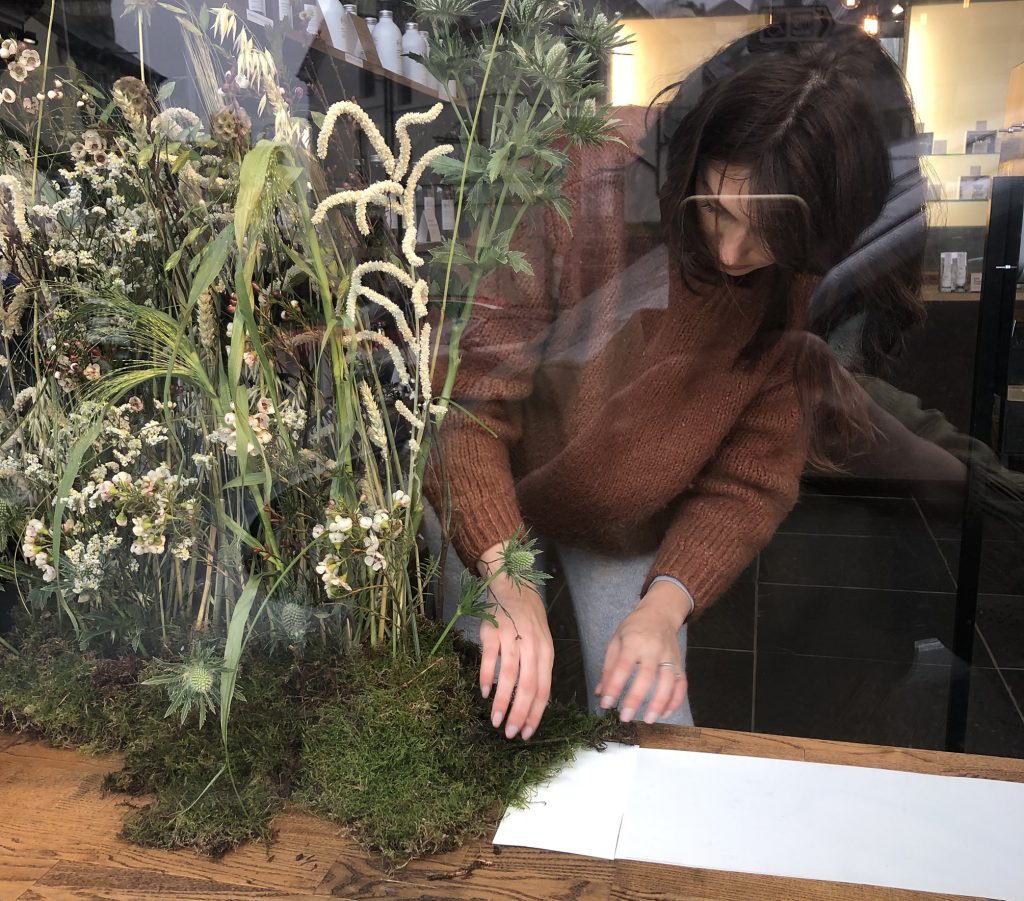
Where do you source the plants and flowers?
I find my floral ingredients from a variety of sources, depending on the time of the year. When the season allows, I try to source all of my flowers from British growers. My main suppliers include Suzie at Picked at Dawn and Rachel at The Yorkshire Flower Patch. Both of these British growers produce beautiful varieties of homegrown flowers throughout the year. When I am working on large weddings or large events, I am more than likely to need a larger amount of flowers than British growers can supply. When this is the case I use my local wholesaler named Marilliam Flowers, who is based in Huddersfield. I also try to forage foliage from my own garden as well as the local hedgerows, but again this is when the season allows. Throughout the winter months, I would predominantly use my wholesalers, or use dried ingredients that I have cut and dried throughout the year. When I am working on weddings that are further afield, I try to contact British growers that are local to that area ensuring the freshness of the flowers and of course it’s always great to reach out and support such suppliers in the community.
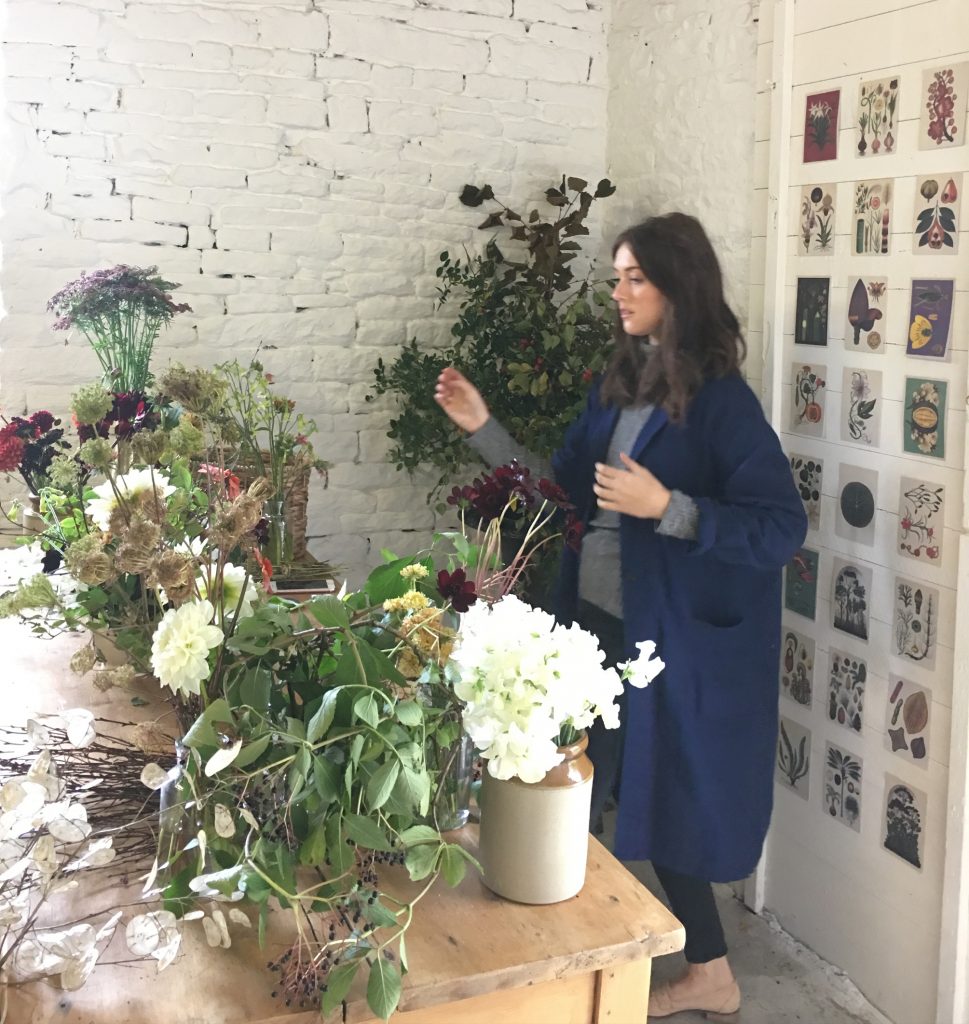
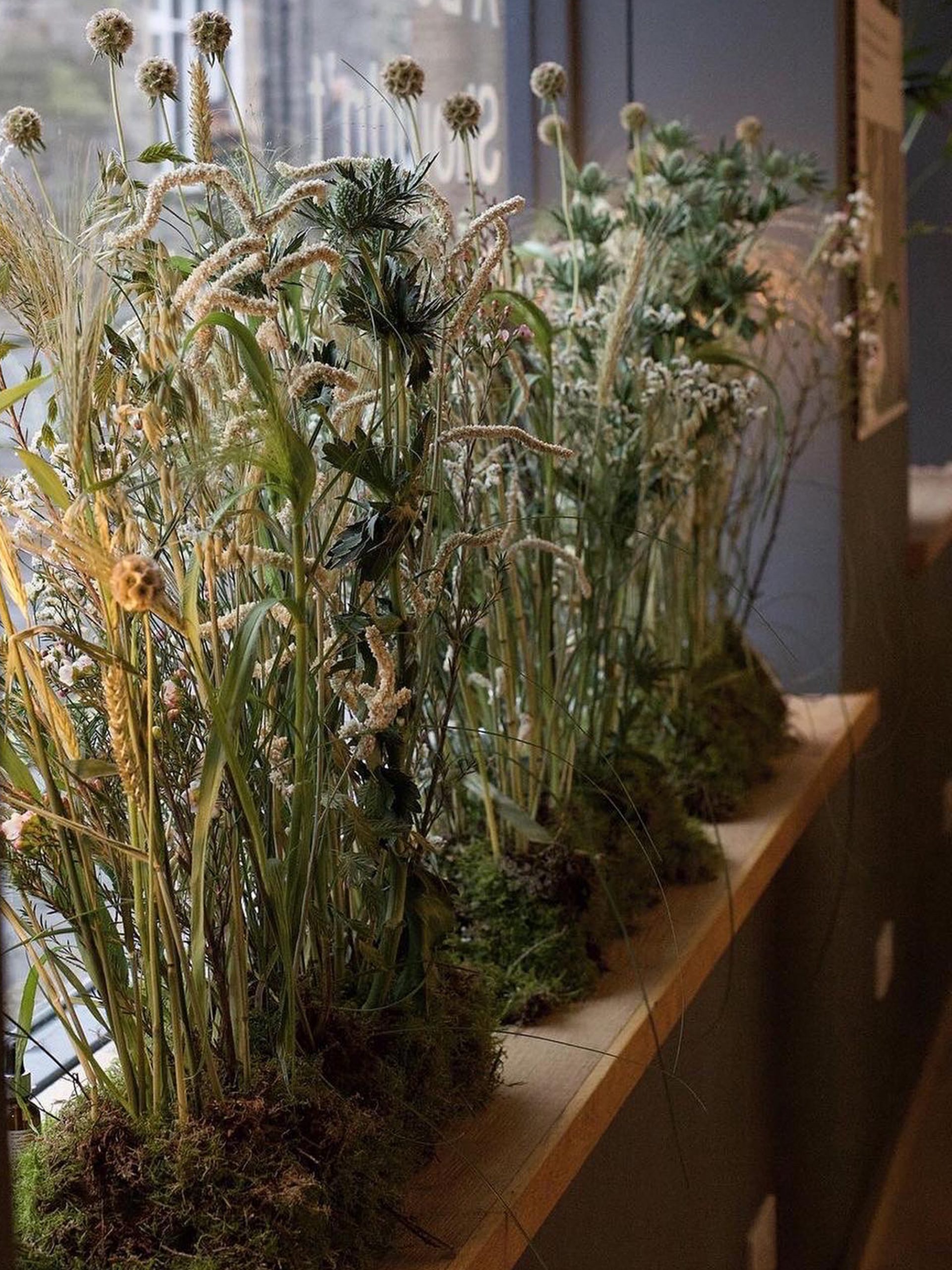
You mentioned foraging. Can you tell us a bit more about this?
Keeping your eye out for a few unusual grassy steams, a leafy branch or even a vegetable that’s bolted and in flower, can bring an unusual twist to an arrangement, but it’s always good to seek permission and know what you can and cannot forage from the wild. There are of course a few things to consider for preserving the environment and sometimes it’s better to enjoy recognising flowers in the wild, but leaving them where they are for others and nature to enjoy. The Sea Holly I have used can be found on coastlines and sand dunes and can be seen throughout the year from January to December.
Moss is easy to forage and can usually be gathered from rocks, logs and the forest floor. It is important to find an appropriate location to forage moss from, and you may need permission from the landowner. Many areas now have specialised forest product harvesting laws that include moss collection. So certainly avoid gathering moss from sensitive areas which include very wet habitats such as bogs, springs, and any habitat within 50 feet of a stream. Collecting moss from these areas can damage fragile ecosystems. I have used Miscanthus Grass from the garden, which is not usually found in the wild, however, this pink feathery grass looks so beautiful and architectural. Its silky flower heads dry beautifully and add an element of fun to any dried arrangement. Scabiosa Stellata is also a plant that can look a little underwhelming when fresh, however, when dried it really comes into its own. Limonium is also a great asset in any garden as the airy pale flowers attract butterflies. When dried, the delicate sprays of flowers make a lovely addition to any arrangement.
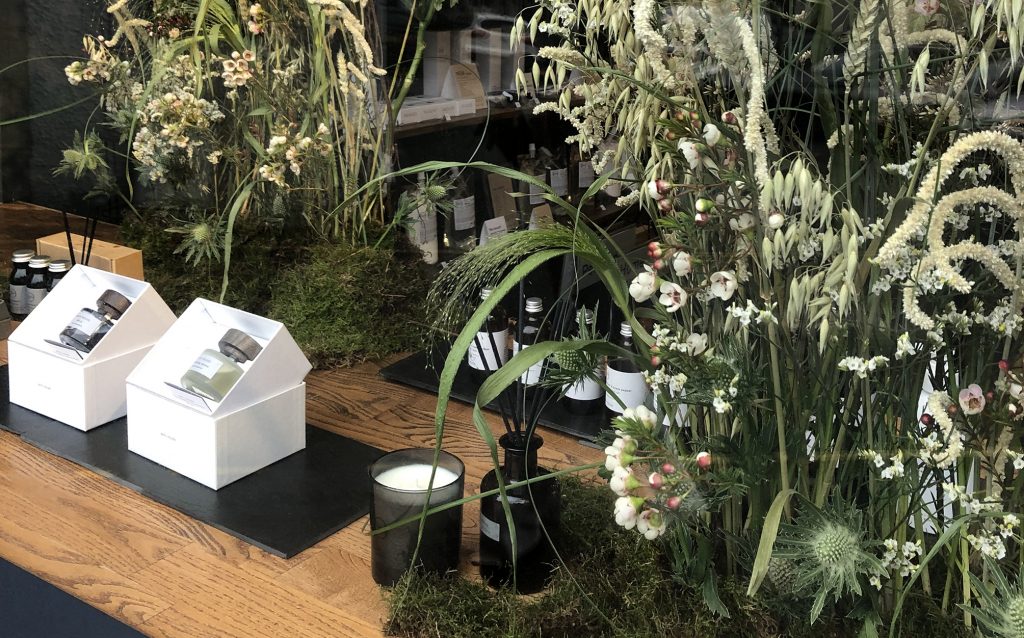
Do the flowers you have used have any relation to fragrance?
Most flowers have a relation to fragrance in that the majority of flowers have a scent, however not all plants smell sweet, for example, Sea Holly. As this plant has been used whilst dried, its fragrance is not as strong and will fade over time. Flowers with dainty blooms and a waxy texture, such as Wax Flower usually have a citrus scent, which I’ve noticed, is particularly apparent when stripping the leaves whilst conditioning for this arrangement. I would describe the installation’s fragrance as ‘earthy’ and ‘woody’ with an undercurrent of moss and a ‘dried, grassy scent’. If I were to pair these installations with a Bath House fragrance it would be ‘Climbing Trees’.

Can you give a suggestion of how customers could create a similar display in their homes?
Yes this is a lovely idea to create a homemade meadow, all you need is a bowl / trough / long planter, some snips, chicken wire, some floral tape (available to buy online), and either a handful of fresh flowers or foraged materials. You can also use moss to finish.
Scrunch and place some chicken wire into your trough (enough so it has a few layers inside the trough) and secure it with tape on the edges of your container. Fill your container with water should you be using fresh flowers.
Place your flowers into the chicken wire so they are secure, and upright following and emphasising the vertical structure of the stems, creating a shape you are happy with and working with the natural shape of the flowers. Make sure to cut each flower before placing it into the container. Once you are happy with your arrangement, you can place the moss in between the stems or around the container for an organic, natural feel.
What projects have you got coming up and how can people contact you ?
It’s an exciting year and I have some really beautiful weddings coming up this year, located all over the country. We had our first wedding at the end of March and we are looking forward to getting into the swing of wedding season!
You can find all of my contact details and my portfolio on my website www.aelisabetflowers.co.uk or you can follow me on Instagram @aelisabetflowers where I regularly post what we have been up to! Should you wish to email me about any projects or weddings then please email aelisabetflowers@gmail.com.



